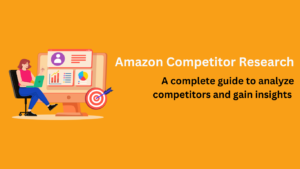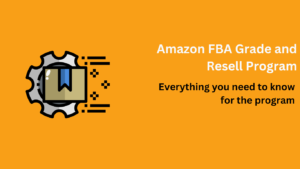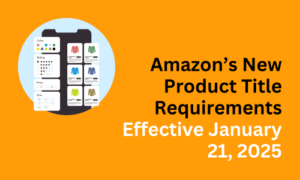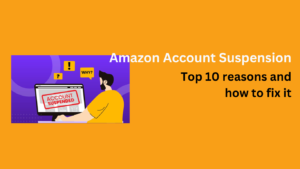Launching a business on Amazon FBA is exciting, especially when you find the right product to sell. But for many, Amazon FBA product research can be overwhelming, especially with so many options and tools available. If you’re aiming to discover how to find a profitable Amazon FBA product, this step-by-step guide will simplify the process, giving you the tools and strategies to ensure your product choice is a smart one.
Step 1: Identify Trending Amazon FBA Products
When starting Amazon FBA product research, look for Amazon FBA trends that align with growing customer demand. A trending product can boost your visibility quickly if chosen wisely.
Where to Find Trending Amazon FBA Products:
- Amazon Best Sellers & Hot New Releases: Amazon’s Best Sellers and Hot New Releases pages are updated frequently, showing you which products are most popular across categories. Look for items that are gaining traction without a high number of competitors.
- Social Media & Google Trends: Platforms like Pinterest and Google Trends help you spot emerging trends. Searching these platforms can give you a head start on identifying products that could gain traction on Amazon.
Example: Suppose you find a popular trend in eco-friendly kitchen products, like reusable kitchen wraps. Research further to see if it’s a genuine, growing trend or a short-lived fad.
Step 2: Analyze Competition and Market Demand
Analyzing demand and competition for your Amazon FBA product ideas is crucial. While trending products are appealing, it’s equally important to ensure the market has consistent demand without excessive competition.
Top Amazon Product Research Tools to Use:
- Helium 10 & Jungle Scout: These tools give detailed data on monthly sales estimates, keyword search volume, and competitor analysis, all of which are essential in finding low-competition products on Amazon.
- Best Sellers Rank (BSR): The Amazon Best Seller Rank helps you gauge demand. A low BSR indicates high demand, but steady BSR rankings over time show a product has reliable demand.
Example: Say you’re interested in a product within the pet category. Tools like Jungle Scout show a stable BSR for pet grooming gloves, indicating steady demand. However, if you also find fewer established sellers, this could mean lower competition.
Step 3: Find a Reliable Supplier
Once you’ve chosen a profitable product, it’s time to find a reliable supplier. The sourcing process differs depending on whether you plan to resell existing brands or create your own product.
For Resellers: Finding Authorized Distributors
If you’re a reseller looking to carry established brand products, seek out authorized distributors to ensure that the products you list on Amazon are genuine and compliant with Amazon’s policies.
How to Find Authorized Distributors:
- Visit Brand Websites: Some brands provide a list of authorized distributors or offer a distributor application form.
- Distributor Directories: Websites like Wholesale Central and Worldwide Brands offer vetted lists of distributors and suppliers.
- Contact the Brand Directly: If a brand doesn’t openly list its distributors, reach out directly and ask about authorized suppliers.
Example: Suppose you want to sell popular electronics. Start by visiting the brand’s official website and check if they list distributors. For example, companies like Apple and Microsoft often require sellers to use approved distributors to protect brand integrity.
For Private Label Sellers: Finding Manufacturers for Unique Products
If you’re interested in creating your own product, sourcing directly from a manufacturer allows for customization and higher control over quality.
Best Platforms to Find Manufacturers:
- Alibaba & Made-in-China: These are the most popular options for sourcing manufacturers, especially in Asia. Both platforms offer a vast range of suppliers, and you can request samples to evaluate product quality.
- DHgate & Global Sources: These platforms offer more direct buying options for smaller quantities, making them ideal for testing new products without committing to large orders.
- Trade Shows: Consider attending trade shows or online sourcing fairs to meet potential suppliers. Sites like GlobalSources.com often host virtual trade shows that bring together thousands of suppliers.
Example: Say you’re designing a custom yoga mat with unique designs. Start on Alibaba or Made-in-China, where you can browse manufacturers specializing in yoga accessories. Request samples to review quality and negotiate minimum order quantities that suit your initial launch.
Step 4: Focus on Profitability
When selling on Amazon FBA, a profitable Amazon FBA product is essential. To ensure your product generates sustainable income, calculate your Amazon FBA profit margin by considering all costs.
Cost Factors to Consider:
- Manufacturing Costs: Find quality suppliers at reasonable costs.
- Amazon FBA Fees: Fees include storage, fulfillment, and referral costs. Use Amazon’s FBA Calculator to estimate these expenses and get a realistic profit forecast.
- Shipping & Customs: For international shipments, remember to account for shipping and import costs.
- Target Profit Margin: Aiming for a 30-40% profit margin after Amazon fees helps ensure profitability.
Example Calculation: For a product that costs $5 to manufacture, $2 for shipping, and has $4 in Amazon fees, selling it at $20 results in a 45% margin. This offers enough flexibility for marketing and other unexpected expenses, making it an attractive option for Amazon FBA sellers.
Step 5: Differentiate Your Amazon FBA Product
Differentiating your product is one of the most effective ways to succeed in Amazon’s competitive marketplace. By creating a unique product, you can improve your chances of making a strong impression and winning over customers.
Ways to Differentiate FBA Products:
- Address Customer Pain Points: Customer reviews are valuable insights. By addressing common complaints, you can improve your product and make it stand out.
- Product Bundling: Offering bundles or adding complementary items adds value and can attract more customers.
- Enhance Product Design and Features: Customize features or colors to make your product distinct.
Example: If you notice that customers complain about the durability of similar silicone kitchen tools, work with your supplier to reinforce the design. Adding a small storage bag can further add value and appeal to customers.
Step 6: Test Your Amazon FBA Product
Before committing to a large inventory, testing your product with a small initial batch can help validate demand and refine your offering. This step allows you to gauge customer interest and identify any improvements needed.
How to Test Amazon FBA Products:
- Order a Small Batch: Start with a test run of around 100–200 units.
- Optimize Product Listing: Use high-quality images, keyword-optimized titles, and descriptions to capture attention. Consider A/B testing titles or images to see what drives more conversions.
- Gather Customer Feedback: Customer reviews offer critical insights. If feedback is positive and demand seems steady, you’re ready to scale. Negative feedback can guide improvements before a larger launch.
Example: Launching a small batch of eco-friendly kitchen towels could help gauge demand. If the towels perform well and receive favorable reviews, it indicates a profitable product. Addressing any constructive feedback will help refine the product before committing to a larger order.
Why You Need Expert Help for Amazon FBA Product Research
Understanding the intricacies of Amazon product research is essential to launch a successful product, but it can be complex. With so many steps and variables, getting help from experienced Amazon FBA consultants like Active Seller Hub can save time and maximize profitability. We specialize in finding low-competition, profitable Amazon products that fit your goals and budget.











